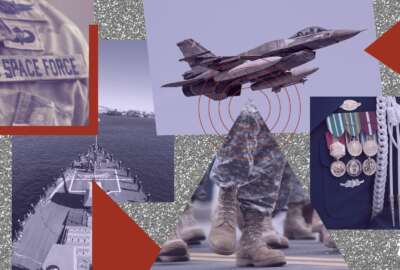

Senators pointed to heightening sexual assault reports, military housing issues and COVID-19 vaccination requirements as common deterrents for potential military...
Leaders across all military services warned Congress about low recruitment levels for the Air Force, Army, Navy and Marine Corps.
The Army, for instance, has so far met only 70% of its fiscal 2022 active duty recruiting goal. With just a couple days left in the fiscal year, the service is on track to miss its recruiting target by up to 30,000 soldiers, said Sen. Kirsten Gillibrand (D-N.Y.), at a Senate Armed Services Committee hearing on Sept. 21.
“The troubling drop in military accession comes at a time of global uncertainty, brought on by COVID-19, rising inflation [and] unprovoked Russian military aggression,” she said. “At the same time, we know that America’s youth have a historically low level of interest in military service, and enjoy a highly favorable job market, which makes it even more difficult to recruit and retain highly skilled personnel.”
Although the Air Force was able to meet its recruitment target this year, the service had to do a lot to get there, for example, by increasing enlistment incentive bonuses by approximately $22 million over the past year. The additional investments resulted in more than 2,200 new recruits between April and September, but the Air Force still has other plans to combat ongoing recruitment challenges. Some of the work involves improving the recruiter training program, increasing monetary incentives for recruits, targeting diverse populations and improving marketing campaigns.
COVID-19 placed many restrictions on Air Force recruiters to meet with potential enlistees. Currently, 70% of active duty recruiters have never recruited in a non-COVID environment, said Stephanie Miller, deputy assistant secretary of defense for military personnel policy.
“Our recruiters have been unable to access schools or conduct other public engagements. This lack of access atrophied the required skills and greatly diminished the routine contacts recruiters need to successfully communicate and promote the Air Force brand,” Miller said.
The Navy met 100% of its active recruiting goal, which encompasses the vast majority of new total accessions. Although its retention remained above year-to-date forecasts, and it’s on track to meet or exceed its goals, the Navy is “cautiously optimistic” for fiscal 2023, said Vice Adm. Rick Cheeseman, deputy chief of naval operations for personnel, manpower and training. He said he expected the service to fall short of its recruitment goals for enlisted reservists and for officers in both the active and reserve components.
For the Marine Corps, which had to reduce its recruitment goal this year, moving to more online recruitment strategies and increasing access to high schools may help improve the service’s recruitment numbers, said Michael Strobl, USMC acting deputy commandant for manpower and reserve affairs.
“The reality is the Marine Corps is facing significant recruiting challenges,” Strobl said. “Residuals from COVID, a very tight labor market, historic lows in qualification rates, propensity and the public perception of the military and a fragmented advertising environment have made it increasingly difficult to recruit.”
Senators raised concerns about other issues hurting military recruitment, too, perhaps most notably the frequency of sexual assault reports among military personnel.
“Valuing your fellow service member is one of the most important characteristics that is necessary for promotion. The valuing for fellow service members is necessary character for you to stay in the military,” Gillibrand said. “Sexual assault, sexual harassment, posting naked pictures of your fellow service members, all of that behavior is something that will end your career. It’s a message that has to be sent from commanders about climate.”
Sen. Josh Hawley (R-Mo.) added military housing challenges to the swath of concerns from senators, calling service members’ living conditions “substandard.”
Lt. Gen. Douglas Stitt, though, said the Army planned to make more investments in improving housing, daycare centers and spousal employment opportunities.
Senators also asked if the COVID-19 vaccine mandate had a significant impact on recruitment numbers, but Miller said the majority of respondents to a recent survey reported that the mandate did not influence their decision to enlist. She added that the department has no plans to remove the vaccination requirement.
The military leaders requested more authorities from Congress to try to make some major strides in recruitment for the next few years, especially when it comes to monetary incentives and resources for reaching out to high school students. The challenge is particularly acute in areas like cybersecurity and information warfare technology positions.
“Our current authorities are really almost 1990s authorities that focus on directory information from telephone books. We don’t have the same level of ability to access content that commercial does,” Miller said. “What we are right now is a blunt force instrument. We want to be more strategic; we want to be able to package our messaging so that it can resonate with greatest effect to a generation where we count seconds in terms of being able to capture their attention. We want to work with the committee to potentially expand our current authorities to do that.”
Copyright © 2025 Federal News Network. All rights reserved. This website is not intended for users located within the European Economic Area.
Drew Friedman is a workforce, pay and benefits reporter for Federal News Network.
Follow @dfriedmanWFED

